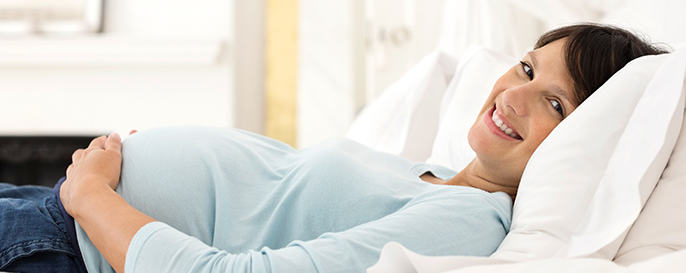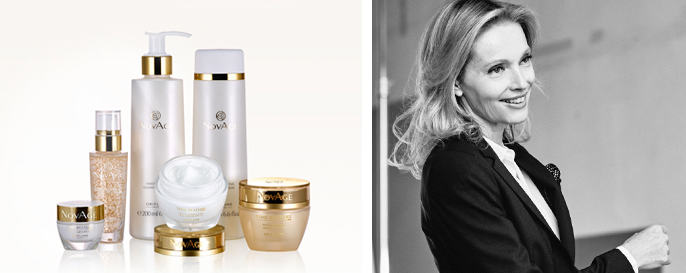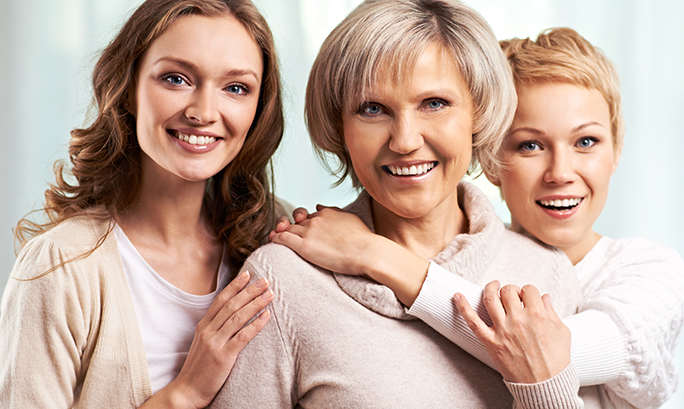
1. PUBERTY
The first major hormonal change occurs when women hit puberty. This is when the body start to produce oestrogens and androgens, like testosterone, in higher quantities than before. Naturally, this impacts our bodies and skin in quite dramatic ways.
Oestrogen will work wonders for the skin by creating a smooth surface. It helps to build collagen and elastin, which are proteins that give the skin its resilience and elasticity. Lastly, it also helps the skin to heal and stay moisturised. At this point you might be asking yourself: “If oestrogen really is that amazing, how come teens suffer the worst from breakouts and acne?”. Well, unfortunately oestrogen isn’t the only hormone on the up.
If oestrogen has almost miraculously good effects on the skin, the implications of testosterone are quite the opposite. Increased testosterone levels lead, not only to larger-looking pores, but also to oily skin through boosted sebum production. And during the menstrual cycle, which starts in puberty, hormone levels are quite irregular. This means that the body goes from peak oestrogen levels, to days where testosterone dominates. As a result of the fluctuation, the follicle walls swell and trap excess sebum. And bam, you’re looking at years of inevitable breakouts.
So, what can teens do to combat the challenges of pubescent skin? There are basically three key actions to take against breakout skin: cleanse to get rid of the excess oil and impurities, exfoliate to eliminate clogged pores, and use a light moisturising gel to avoid aggravating the skin and worsen the problem. It might seem counter-intuitive to moisturise oily skin, but oil isn’t the same as moisture. Read more in our editorial: Skin Secrets for Teens. We recommend using the Pure Skin range to cover all these areas.

2. PREGNANCY
The next big hormonal change occurs when a woman becomes pregnant. But, how the skin changes is different for different people. A spike in oestrogen leads some women to experience the famous “pregnancy glow” with improved skin and hair quality. They are the lucky ones.
Others experience a multitude of problems, where skin discolorations are the most common issues. Dark spots, patches or even bigger areas of skin can change colour due to hormonal changes that lead to increased melanin production. Melanin is our natural defence against sun exposure and the pigment that gives the skin its colour. So, the more melanin that’s in the skin, the darker it gets. Melasma is one example of this phenomenon. It’s visible as patchy, brown marks in the most sun-exposed parts of the face; like the forehead, nose and cheeks. Also, called the “mask of pregnancy” it’s a quite common occurrence.
So, what can women do to combat the challenges of pregnancy skin? The first thing to do, is to always wear UV protection and to re-apply it every two hours or so. Start using sunscreen under your day cream and look for makeup and skin care with SPF. For those pesky discolorations we recommend using the NovAge Bright Sublime range. It reduces and prevents dark spots from developing.

3. MENOPAUSE
The third, and final, big hormonal change is menopause. This is where the oestrogen and progesterone production drops dramatically. One could say that menopause is like reversed puberty, and some of the skin symptoms are actually the same.
Once again, some women experience breakouts. And once again, it’s due to hormonal fluctuations. As oestrogen levels drop there’s nothing to oppose the testosterone in the body. Therefore, testosterone becomes more dominant, which leads to clogged pores and trapped sebum due to surface dryness. The good news is that older women tend to get fewer breakouts than teenagers. The bad news is that the acne can be deeper and more inflamed, as the anti-inflammatory properties of oestrogen are reduced. Another skin condition that can re-occur during menopause is Melasma. Years of sun exposure have a cumulative effect on the skin’s overall tone and smaller sun spots turn into more permanent age spots.
Unfortunately, it doesn’t end there. Since oestrogen is a crucial part of many beautifying processes in the skin, losing some of it results in visible changes. First, the skin loses elasticity, volume and firmness due to lower collagen production. Second, the skin becomes less radiant as the epidermal turnover slows down. This means that new skin cell production and natural shedding occurs at a slower rate. Third, the skin gets much dryer as it loses the ability to retain moisture. These are all effects of lower oestrogen levels, but also normal signs of ageing that happen regardless of hormonal changes. So, in reality, the skin is affected by both hormones and age.
But what can women do to combat the challenges of menopausal skin? It might sound obvious, but the best way to tackle signs of ageing, is to use a skin care range especially developed for mature skin. First, mature skin needs to target the declining collagen levels to fight loss of density and definition, deep wrinkles, and dryness. Second, it needs help dealing with age spots from melanin build-up. We recommend our new NovAge Time Restore with GenisteinSOY Technology and Ribwort Plant Stem Cell extract∆ that directly targets these issues. Read more about the range and ingredients here. Finally, using a proper skin care routine helps you fight the breakouts.



